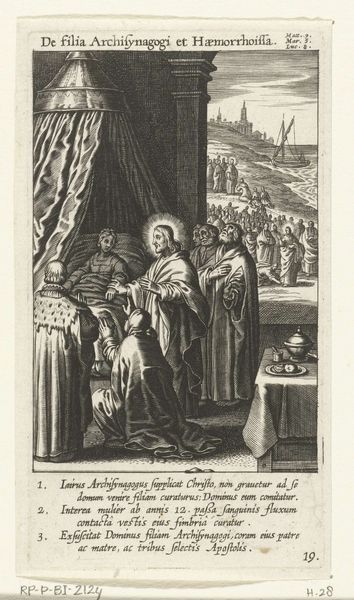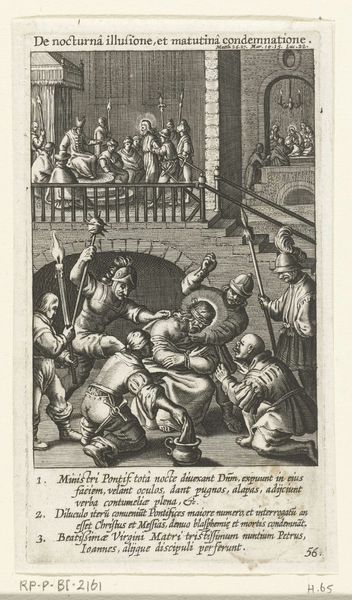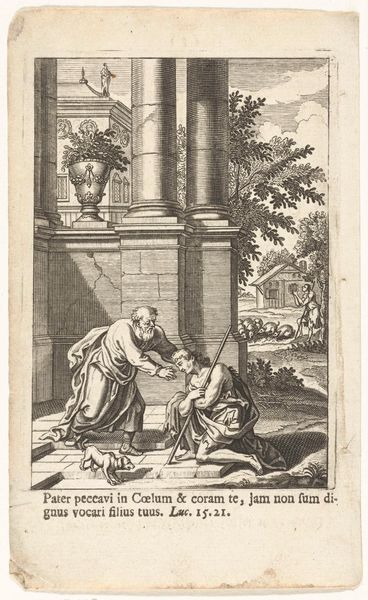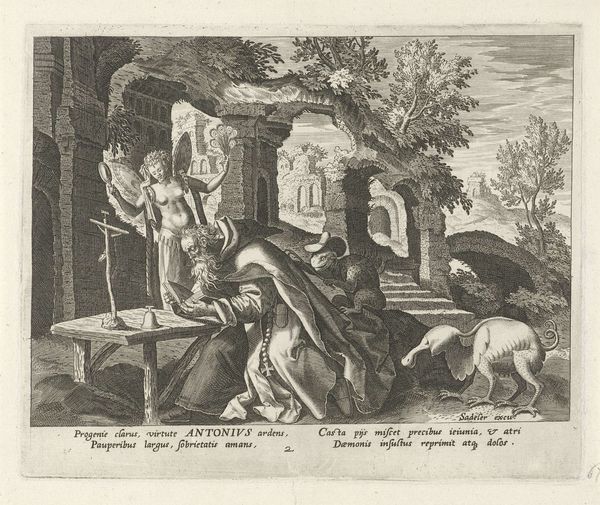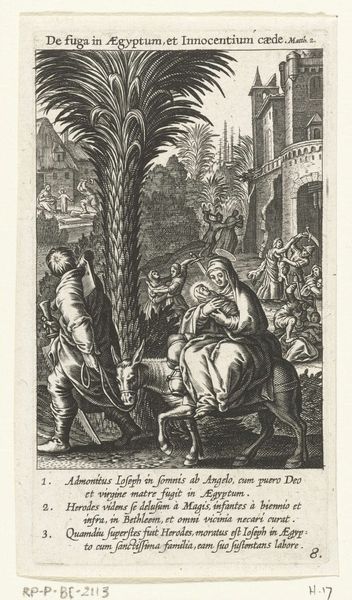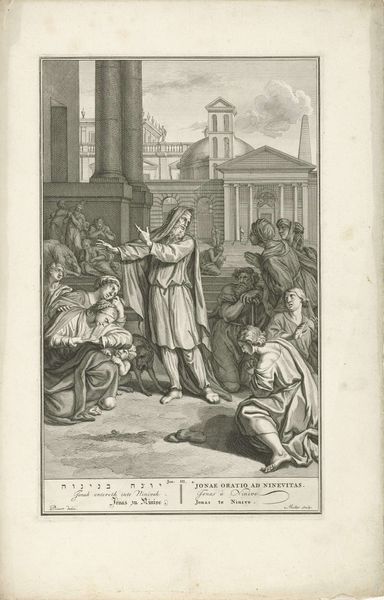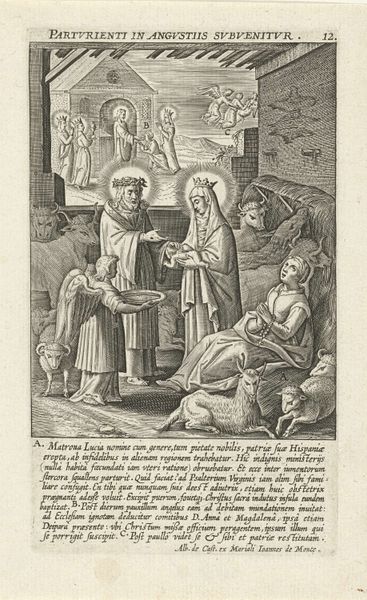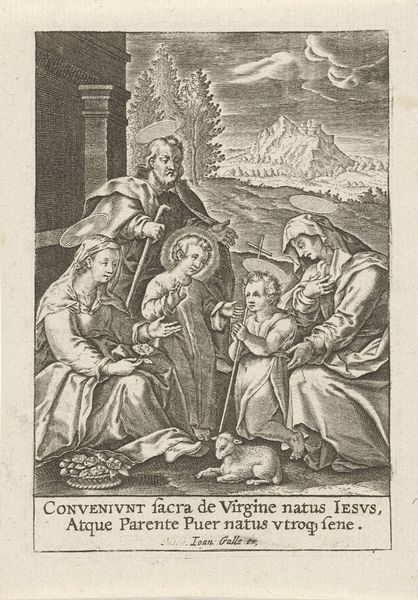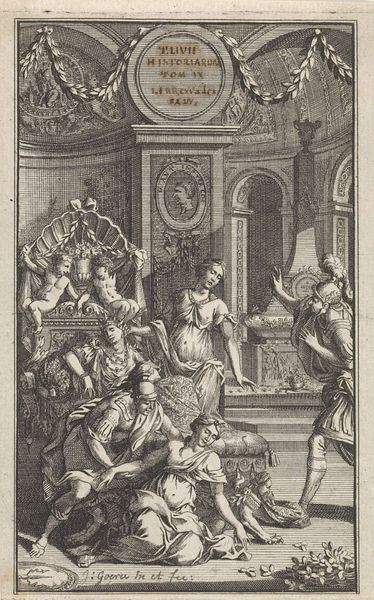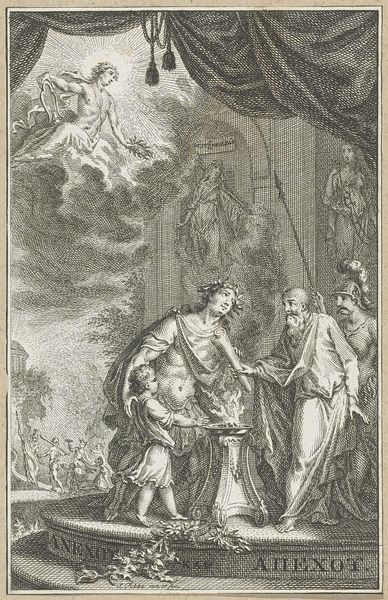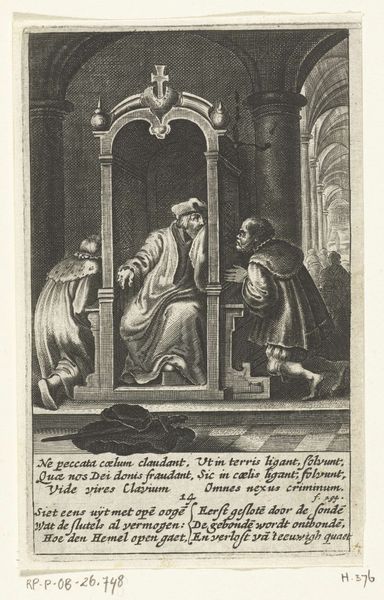
Maria Magdalena knielt voor Christus die is gekleed als een tuinman 1590 - 1622
0:00
0:00
boetiusadamszbolswert
Rijksmuseum
print, engraving
#
baroque
# print
#
old engraving style
#
figuration
#
line
#
history-painting
#
engraving
Dimensions: height 133 mm, width 75 mm
Copyright: Rijks Museum: Open Domain
Curator: This is "Maria Magdalena Kneeling before Christ Dressed as a Gardener," an engraving by Boëtius Adamsz. Bolswert, likely created between 1590 and 1622. Editor: It’s quite stark. The light seems concentrated around Christ, almost like a spotlight, while the edges of the composition are left rather somber. What immediately stands out to me is the distinct imagery – Christ with gardening tools – such unusual symbols combined. Curator: The historical context sheds light on this seeming incongruity. After the Council of Trent, there was a renewed focus on biblical narratives accessible to the public. This engraving likely served as a devotional image. Note the inscriptions below? They would be used for contemplation, for personal engagement with the resurrection story. The political importance of reaffirming biblical narratives was powerful. Editor: I agree, its intention is didactic. Bolswert uses the gardener attire, shovel in hand, to visually signify Christ's "tending" to humanity after the resurrection – the seeds of faith sown anew. This iconography underscores the era's deep dive into relatable metaphors to convey spiritual truths. What do you make of Mary Magdalene's posture, almost pleading? Curator: It speaks to the societal position of women within religious structures at the time, both acknowledging her role as witness while maintaining the established gendered dynamic of deference. And considering prints like these were broadly circulated, it reinforced that hierarchical relationship on a grand scale. Editor: Exactly. Consider the angels to the side in shadow, but there they are at the Tomb, a space normally so frightful. This is the key, visual symbols, repeated continuously reinforcing theological beliefs that translate to cultural stability. And also consider it in the personal and psychological level, on how it speaks to finding something unexpected, profound renewal, in very ordinary surroundings. Curator: And it circulated. The very nature of the print – affordable, reproducible – placed it within reach of diverse audiences. A powerful image married with relative accessibility shaped the reception and the sustained legacy of such imagery. Editor: Yes, this small engraving acts as a key into the collective psyche. A perfect instance where art truly meets culture and personal meaning.
Comments
No comments
Be the first to comment and join the conversation on the ultimate creative platform.
